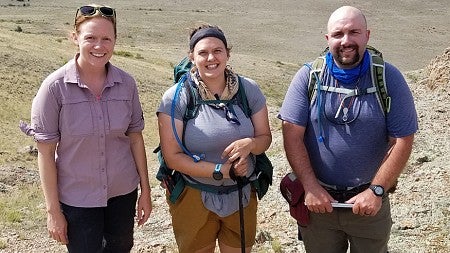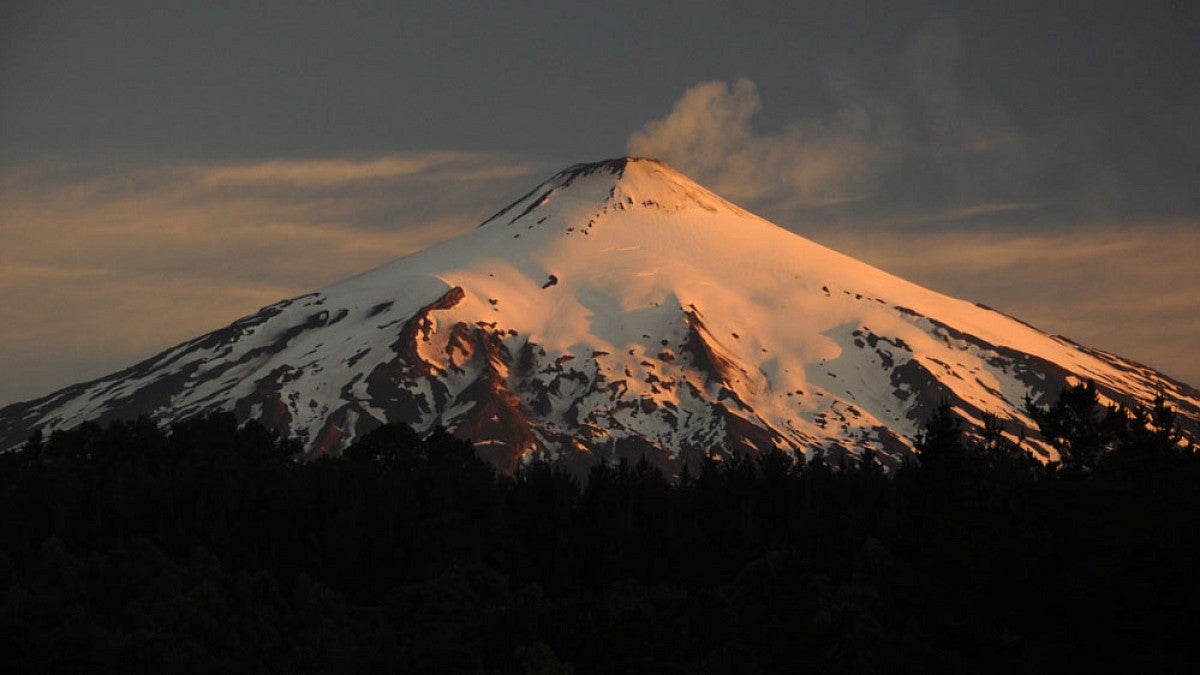Magma, or subterranean molten rock, is always moving invisibly below the earth’s crust, but where and why it erupts is the focus of two recently funded investigations involving University of Oregon volcanologist Meredith Townsend.
The assistant professor of earth sciences is a co-investigator on a large team study based in Chile and lead investigator on a smaller study using data from Colorado. Both were funded this summer by the National Science Foundation. The project in Chile will span five years and received $2,800,000 ($303,508 of which went to Townsend) and the project in Colorado will span three years and received $308,426.
Volcanoes are major drivers of planetary events, and Townsend said that’s why she wants to understand them better.
“Volcanoes are like the lifeblood of the planet,” Townsend said. “They are the reason we can live and exist on this earth. The earth’s oceans and atmosphere and crust are all built from materials that were brought to the surface from depth through volcanoes, and to this day they play a major role in perturbing the climate system.”

“At big stratovolcanoes, like we have here, eruptions can happen on the summit, or anywhere on the flanks of the volcano,” Townsend said, “and that difference is going to matter to people who live at the flanks. I’m trying to understand what causes magma to go where it does, and what the effect of the mountain is on those directions.”
Her hypothesis is that the mass of the mountain, which is a deposit left by prior eruptions of thick, sticky lava, affects the path of the magma as it travels toward the surface.
For example, South Sister in the Cascades Range has seen several geologically recent eruptions on its flanks, and an area west of the cone has been rising up since the 1990s, thought to be a result of magma pooling below the crust. Flank eruptions from the Three Sisters system two to three thousand years ago sent lava flows down the Mckenzie River watershed, damming tributaries several times.
Townsend and her co-investigator Andrew Harp, a researcher at California State University, Chico, and UO graduate student Gui Aksit, will use field data such as drone footage from Colorado and rock samples collected by Aksit, along with numerical models and lab experiments, to attempt to build a new model for magma transport, factoring in how it’s affected by loading of surface mass above the magma.
The opposite effect, unloading of surface mass, is the focus of Townsend’s other investigation in Chile, where glacial melt due to climate change has reduced the load of ice above a number of volcanoes. The investigation seeks to learn whether the loss of surface ice increased volcanic eruptions.
To do this, a team of 10 investigators from various fields, including volcanologists, glacial geologists and paleoclimate scientists, and led by University of Wisconsin professor Brad Singer will look at five active volcanoes in the Andes, examining rock deposits to put together a history of the volcanoes. That will let the team compare the frequency of eruptions when the ice mass was much larger with the present day.
Not much ice is left in the Andes today. But the new findings will help show volcanologists what to expect in volcanic regions that still have a lot of ice, such as Alaska or Antarctica, as that ice melts in a rapidly changing climate.
One exciting aspect of the ice grant, Townsend said, will involve running a volcano field school, both in the Cascades and the Andes. The Cascades school will provide community college students in Oregon with field experience and career readiness training.
Townsend’s research on the ice grant involves numerical modeling of the magmatic system. Though that work may or may not be in the field, she’s still very excited to be collaborating with incredible scientists around the world. The broad implications of Townsend’s research, particularly the ice research, will be important as researchers try to understand how the planet’s climate system continues to adapt to big changes.
“We already know that volcanic eruptions can contribute to climate change,” Townsend said. “But what we haven't figured out yet is whether there's a coupling in the other direction. Can climate change trigger volcanic activity? If so, there could be feedbacks that we aren't actually accounting for when we think about the effects of global climate change.”
—By Anna Glavash Miller, College of Arts and Sciences


